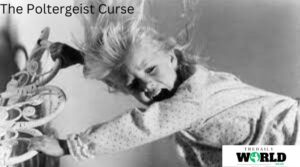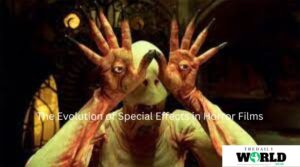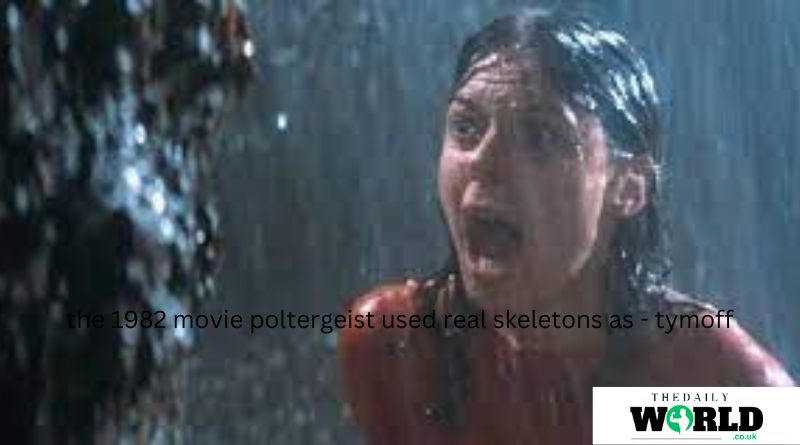The 1982 horror classic, Poltergeist, has long captivated audiences with its chilling storyline and groundbreaking special effects. However, one of the most unsettling aspects of the film extends beyond the plot and into the real world: the use of actual human skeletons during its production. This revelation has fueled numerous discussions and debates over the years, adding another layer of eerie fascination to an already spine-tingling movie. This article delves into the details of how and why real skeletons were used in Poltergeist, the reactions of the cast and crew, and the lasting impact this decision has had on the film’s legacy.
The Shocking Decision to Use Real Skeletons
When it comes to creating horror movies, authenticity can significantly enhance the fear factor. In the case of Poltergeist, the filmmakers took this concept to an extreme by opting to use real human skeletons instead of plastic replicas. The decision, driven primarily by budget constraints and the quest for realism, was made by special effects artist Craig Reardon. At the time, real skeletons were more cost-effective than high-quality plastic ones, making them the practical choice for the production team.
Behind the Scenes: How Real Skeletons Were Obtained

Acquiring real human skeletons for film production might sound like a macabre task, but it was not uncommon in the 1980s. Medical supply companies provided these skeletons, typically sourced from India. These skeletons were originally intended for educational purposes, aiding medical students in their studies. However, their use extended to Hollywood, where they found their way into movie sets for a more realistic depiction of human remains.
The Infamous Pool Scene
One of the most memorable and disturbing scenes in Poltergeist is the pool sequence, where actress Jo Beth Williams, playing the mother, Diane Freeling, finds herself in a half-filled swimming pool surrounded by muddy water and skeletons. During the shoot, Williams was unaware that the skeletons floating around her were real human bones. The scene’s intensity and her genuine reactions added an extra layer of horror that could not have been achieved with plastic props.
Cast and Crew Reactions

The revelation that real skeletons were used sparked a mixture of shock, revulsion, and anger among the cast and crew. Jo Beth Williams, upon learning the truth, expressed her discomfort and disbelief. The knowledge that she had been in close contact with human remains during the filming process was profoundly disturbing. Other cast members shared similar sentiments, with some feeling that the use of real skeletons crossed a moral line.
Ethical Concerns and Hollywood Practices
The use of real human remains in Poltergeist raised significant ethical questions. While the decision was primarily driven by budgetary constraints and the desire for authenticity, it sparked a broader conversation about the treatment and respect of human remains. The practice of using real skeletons in films has since declined, with modern productions opting for highly realistic plastic replicas or CGI to achieve the desired effect without ethical dilemmas.
Impact on the Film’s Legacy
Poltergeist is remembered not only for its terrifying plot and special effects but also for the controversies surrounding its production. The use of real skeletons has become an integral part of the film’s lore, contributing to its status as a horror classic with a genuinely disturbing backstory. This aspect of the film’s history has been the subject of numerous articles, documentaries, and discussions among horror enthusiasts and film historians alike.
The Poltergeist Curse

Adding to the film’s mystique is the so-called “Poltergeist curse.” Several untimely and tragic deaths of cast members have fueled rumors of a curse associated with the movie. While the curse is likely a coincidence, it has become intertwined with the narrative of the film, with some attributing the tragedies to the use of real skeletons during production. This speculation, though unfounded, has kept the movie in the public consciousness and contributed to its legendary status.
Reflections on Film Production and Respect for Human Remains
The controversy surrounding Poltergeist serves as a cautionary tale for filmmakers. While striving for realism and authenticity is essential, it is equally important to consider the ethical implications of production choices. The respect for human remains and the dignity of individuals should never be compromised for the sake of art or budgetary constraints. The film industry has evolved since the 1980s, with greater awareness and sensitivity toward such issues, ensuring that similar controversies are unlikely to arise in modern productions.
The Evolution of Special Effects in Horror Films

Since the release of Poltergeist, special effects technology has advanced significantly. Modern horror films rely heavily on CGI, advanced animatronics, and highly detailed plastic models to create realistic and terrifying scenes. These advancements have made it possible to achieve the desired level of horror without ethical concerns, allowing filmmakers to push the boundaries of fear while maintaining respect for human dignity.
Conclusion: Poltergeist’s Place in Horror History
The 1982 movie Poltergeist remains a landmark in horror cinema, not only for its storytelling and special effects but also for the controversial use of real skeletons. This decision has left a lasting impact on the film’s legacy, adding an extra layer of horror and fascination. As audiences continue to revisit this classic, the story behind the production serves as a reminder of the complexities and ethical considerations involved in filmmaking. Poltergeist’s unique blend of supernatural horror and real-world controversy ensures its place in the annals of film history, captivating and disturbing viewers for generations to come.
In reflecting on the 1982 movie Poltergeist and its use of real skeletons, one must consider the balance between artistic ambition and ethical responsibility. The film’s legacy is a testament to the enduring power of horror and the importance of evolving practices in the industry to ensure respect and dignity in all aspects of production.
Read also: check













